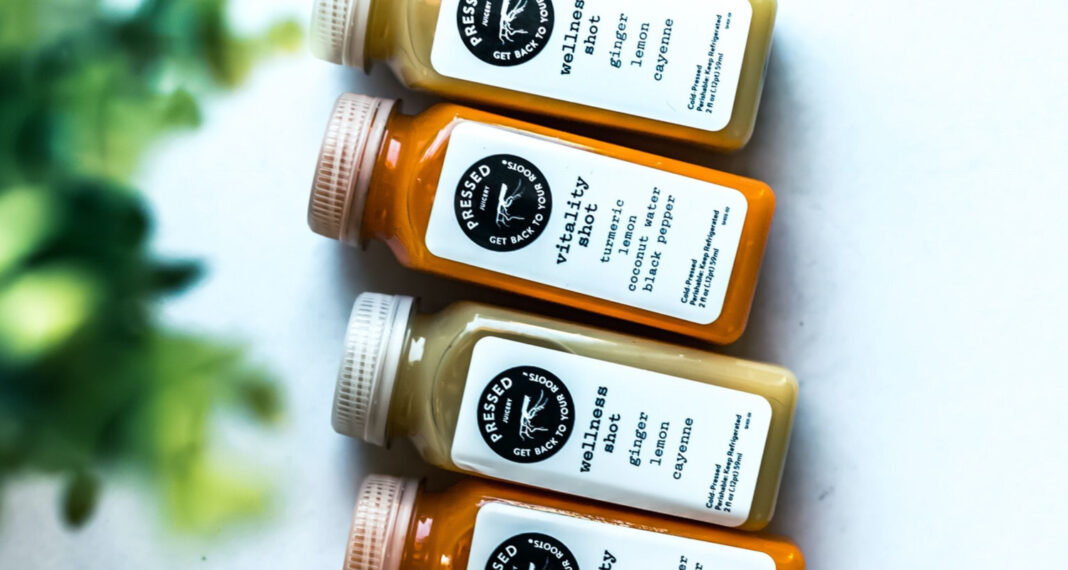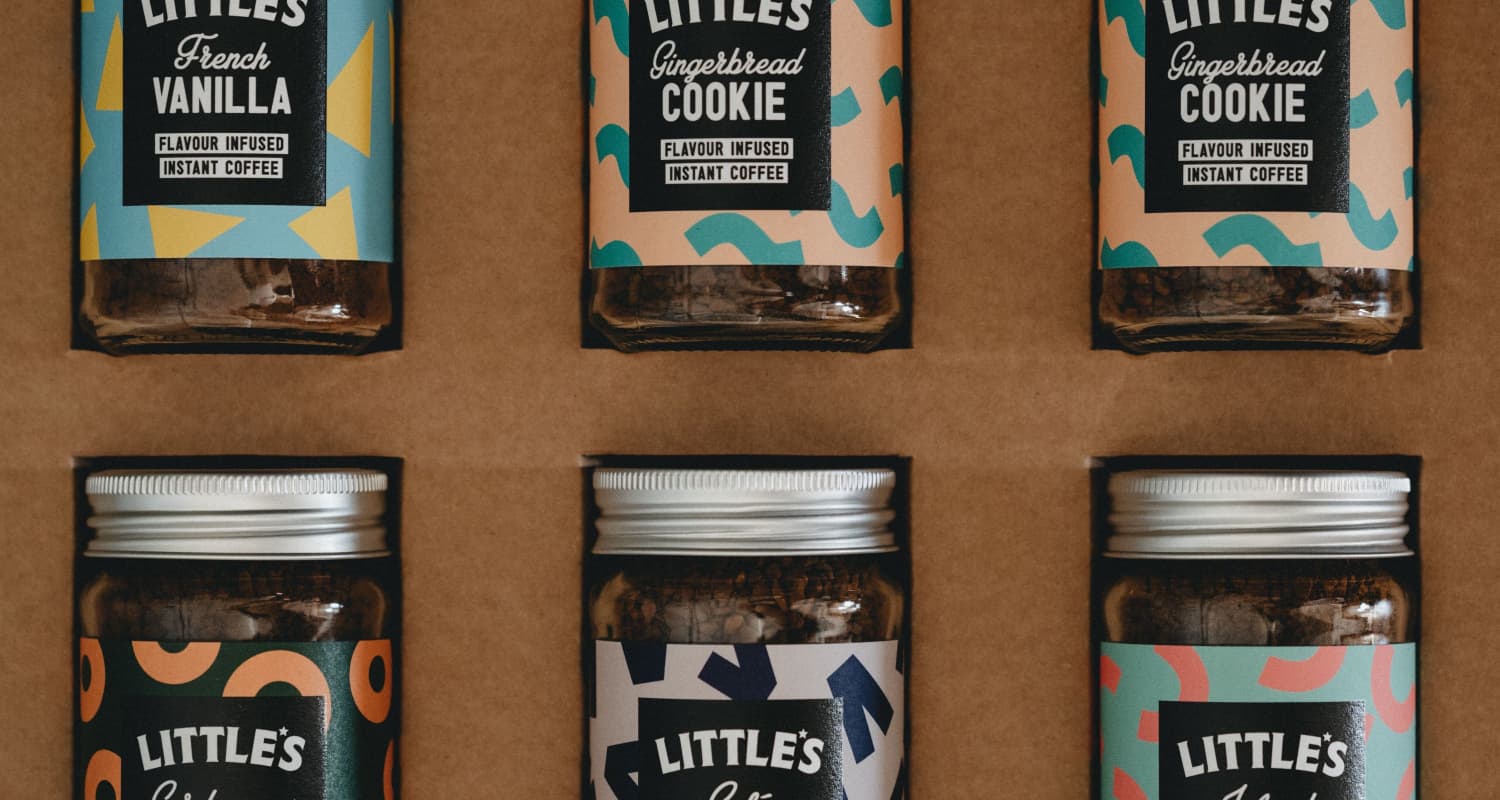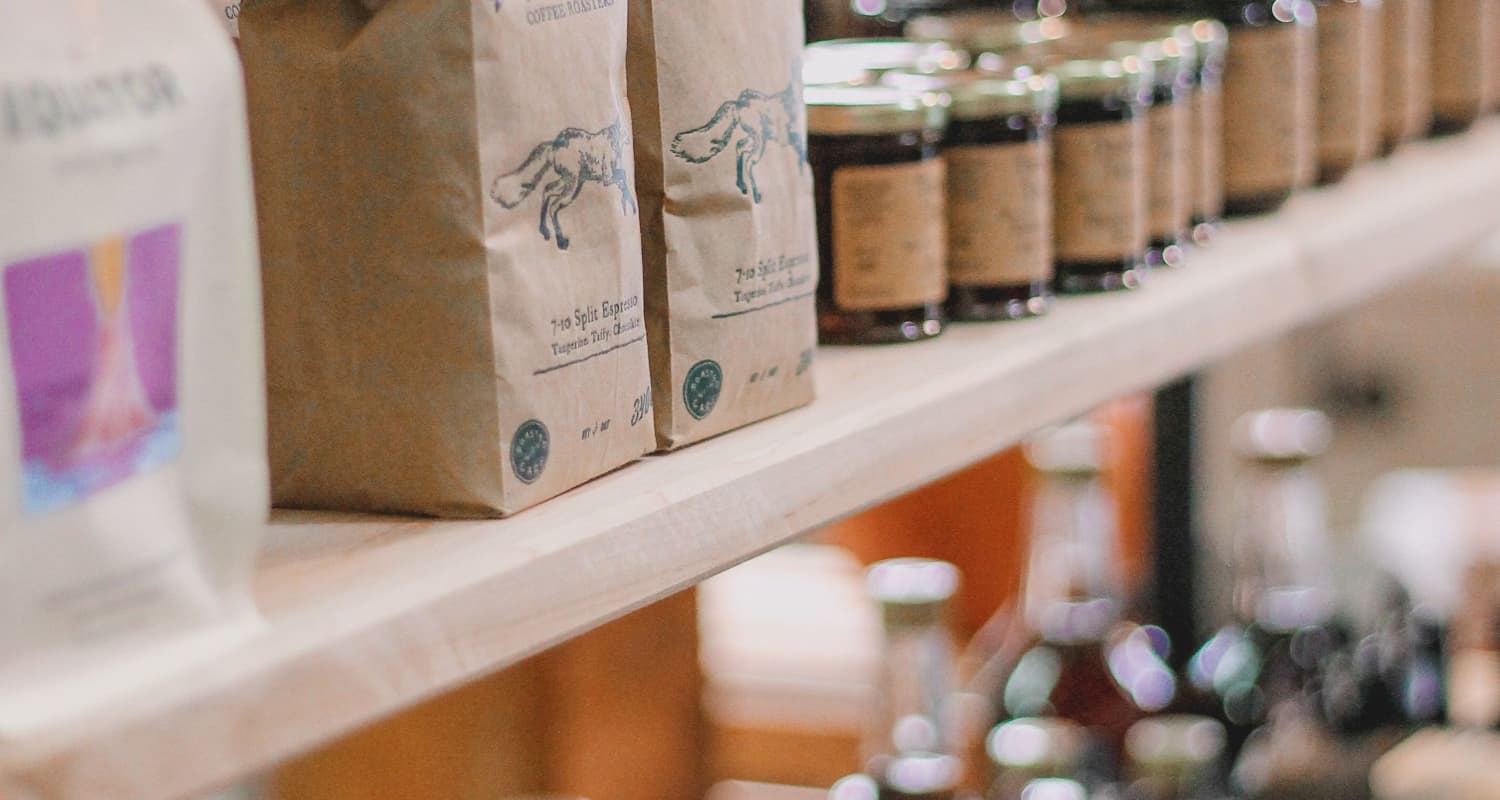Imagine launching your dream food product, only to have it pulled off the shelves due to non-compliance with labeling regulations – a nightmare for any entrepreneur! Navigating through the intricate web of FDA guidelines for creating a Nutrition Facts Label can be a daunting task, often riddled with confusion and potential pitfalls. The stakes? Consumer trust, brand reputation, and stringent regulatory penalties.
Identify your product’s serving size and utilize accurate nutritional data to list calories, macronutrients, and specified vitamins and minerals per serving. Ensure adherence to FDA guidelines for label format, font size, and nutrient daily values. Leverage online tools like ReciPal or Online Labels’ Nutrition Label Generator for creating and customizing your label. Make sure it’s both compliant and aesthetically aligned with your packaging.
But here’s the silver lining: creating an accurate, compliant nutrition label doesn’t have to be a Herculean task. With a sprinkle of diligence, a dash of attention to detail, and a handy guide (that’s us!), you can demystify the process. Ensure your product not only stays on the shelves but also wins hearts!
See Also: How to Become a Nutrition Response Testing Practitioner: A Detailed Guide
Contents
- 1 Understanding FDA Compliance in Nutrition Labels
- 2 Step-by-Step Guide to Creating a Nutrition Facts Label
- 3 Leveraging Technology for Nutrition Label Creation
- 4 Practical Tips and Common Mistakes in Nutrition Labeling
- 5 Case Studies and Real-world Applications
- 6 Future Trends and Evolving Guidelines in Nutrition Labeling
- 7 FAQs
- 8 Conclusion
- 9 Additional Resources and Further Reading
Understanding FDA Compliance in Nutrition Labels
Navigating through the labyrinth of FDA compliance can be a tad overwhelming. Yet it’s an indispensable journey for every food entrepreneur. Ensuring your nutrition labels are in harmony with FDA guidelines isn’t merely a regulatory hoop to jump through. It’s a commitment to transparency, consumer trust, and, fundamentally, the health of your customers. Let’s embark on a brief exploration of the FDA’s guidelines. Unravel why sticking to them is non-negotiable.
Overview of FDA Guidelines for Nutrition Labels
Dive into the world of FDA guidelines, and you’ll find a structured, albeit intricate, framework designed to safeguard consumers. The guidelines dictate the nitty-gritty of nutrition labeling. They include the mandatory listing of certain nutrients, the accurate representation of serving sizes, and the specific format and placement of the label on your product packaging. It’s a meticulous blueprint, ensuring that every morsel of information provided is clear, accurate, and standardized across the board.
Importance of Adhering to FDA Guidelines
Why entangle ourselves in the detailed web of FDA guidelines, you ask? The essence lies in building a bridge of trust with your consumers. Adhering to FDA guidelines ensures that the nutritional information you provide is not just accurate but also comparable. This enables consumers to make informed dietary choices. It’s about fostering transparency, aligning your brand with ethical practices, and ensuring that your product communicates its nutritional narrative effectively and truthfully.
Impact of Non-compliance
Venturing into the realm of non-compliance is a risky business! It’s not merely about facing regulatory penalties or recalling products. The real dagger through the heart? Diminishing consumer trust. Non-compliance casts a shadow over your brand’s credibility, potentially tarnishing its reputation and customer loyalty. Moreover, it poses a risk to consumers who rely on accurate nutritional information for their dietary and health decisions. This makes compliance not just a regulatory obligation but a moral one too.
See Also: How Nutrition Works: A Beginner’s Guide to Understanding
Step-by-Step Guide to Creating a Nutrition Facts Label
Embarking on the journey of crafting a Nutrition Facts Label might seem like navigating through a culinary maze. But fret not! With a dash of clarity and a sprinkle of a systematic approach, we can cook up a label that’s not just FDA-compliant but also a clear communicator to your consumers. Let’s slice through the complexity and serve up a step-by-step guide to creating a scrumptious, transparent, and compliant Nutrition Facts Label.
Deciding the Label Format and Placement
Embarking on the journey of “how to make a nutrition label” begins with a crucial decision-making process: selecting the right format and ensuring optimal placement on your product packaging. The FDA offers a wardrobe of label formats to suit various packaging designs. Whether it’s the classic vertical format, the succinct tabular style for smaller packages, or the linear format for slim containers, selecting the right outfit is pivotal.
Placement is key too! Make sure the label stands out, can be read easily, and follows the FDA’s placement rules. It’s all about making the nutritional facts strikingly visible and digestible at first glance!
Determining Serving Sizes and Calories
Next, let’s talk portions! Determining the serving size is akin to setting the stage for a culinary show. It’s crucial to ensure that the serving size is realistic, relatable, and in alignment with the FDA’s Reference Amounts Customarily Consumed (RACC). Navigating through “how to make a nutrition facts label” begins with a pivotal step: determining the serving size. It sets the stage for the nutritional narrative of your product, ensuring that the calories and nutrients listed are relevant and relatable to your consumers, providing a clear and accurate snapshot of the nutritional value they will gain from enjoying your product.
Listing Macronutrients, Vitamins, and Minerals
When pondering “how to create a nutrition label,” a crucial step involves meticulously listing macronutrients, vitamins, and minerals. On to the heart of our label – the macronutrients, vitamins, and minerals! This is where we unveil the nutritional essence of your product. List out the fats, carbohydrates, proteins, and other vital nutrients, ensuring accuracy and adherence to FDA guidelines. Don’t forget the vitamins and minerals, ensuring you highlight those that are mandated by the FDA. It’s like presenting the ingredients of your culinary masterpiece, ensuring your consumers know exactly what they’re savoring.
Utilizing the Percent Daily Values (%DV)
In the process of “creating a nutrition facts label,” utilizing the Percent Daily Values (%DV) becomes a pivotal step, acting like a guide that helps consumers understand how your product fits into their daily dietary journey. The %DV helps consumers understand the nutrient profile of your product in the context of a total daily diet. It’s your way of saying, “Here’s how our product will accompany you in your daily nutritional journey!” Ensure these percentages are accurate, guiding your consumers through a wholesome dietary experience.
Adding Additional Nutritional Information
In the context of “how to make a food label” that goes above and beyond, adding additional nutritional information becomes a vital step. This could encompass added sugars, specific types of fats, or other nutrients that your product generously offers. It’s your chance to go above and beyond, providing extra tidbits of information that could cater to the specific dietary needs and curiosities of your consumers. Think of it as the cherry on top, making your product not just compliant but also a transparent, trustworthy choice for your consumers.
See Also: How Much Does Precision Nutrition Coaching Cost? Full Details
Leveraging Technology for Nutrition Label Creation
In the digital era, crafting a Nutrition Facts Label can be a delightful blend of accuracy and convenience, thanks to a buffet of online tools and platforms. These digital chefs, if you will, bring to the table a plethora of options, ensuring that your label is not just FDA-compliant but also aesthetically pleasing. Let’s embark on a digital journey, exploring how technology can be your sous-chef in the kitchen of nutrition label creation.
Overview of Online Tools and Platforms
Welcome to the digital kitchen, where online tools and platforms serve as your culinary assistants in crafting Nutrition Facts Labels! By generating FDA-compliant labels and providing templates for different packaging designs, these tools aim to simplify label creation. They guarantee your label has accurate nutritional details and is presented attractively, making it a delightful sight for consumers.
Step-by-Step Guide Using Online Labels’ Nutrition Label Generator
Let’s dive into a practical example with Online Labels’ Nutrition Label Generator. Imagine having a digital assistant that not only helps you stir in the right nutritional information but also ensures the final label is visually appetizing! Begin by selecting a label format that suits your packaging, input the nutritional facts, and voila, your label is ready to be downloaded and printed! It’s like having a personal chef guiding you through each step, ensuring every detail is meticulously taken care of, presenting you with a label that’s both compliant and consumer-friendly.
Exploring Other Online Platforms like ReciPal and ESHA
Venturing further into the digital realm, platforms like ReciPal and ESHA offer additional flavors to your label creation journey. ReciPal, for instance, not only assists in crafting FDA and CFIA-compliant labels but also manages your recipes, costs, and inventory. On the other hand, ESHA provides a detailed guide on creating labels, ensuring they adhere to FDA guidelines, and even offers a software solution, Genesis R&D, to streamline the process. It’s like exploring different culinary styles, each platform offering unique features and benefits, ensuring that you find the perfect match for your labeling needs.
See Also: How Much Does Nutrition Response Testing Cost? An Overview
Practical Tips and Common Mistakes in Nutrition Labeling
Embarking on the journey of nutrition labeling can sometimes feel like navigating through a recipe with multiple culinary techniques involved. A dash too much of this or a pinch too little of that, and voila, you might find yourself in a bit of a pickle! But worry not, for with the right tips and a keen eye for common mistakes, you can concoct a label that’s both compliant and clear. Let’s sift through some practical tips and common pitfalls in nutrition labeling.
Ensuring Accuracy in Nutritional Information
Ensuring accuracy in nutritional information is akin to measuring your ingredients meticulously. It’s pivotal to validate the nutritional data against reliable databases or laboratory analyses. Remember, an inaccurate label can not only lead to regulatory repercussions but also erode consumer trust. It’s about crafting a label that’s not just a legal requirement but a transparent communication tool with your consumers.
Avoiding Common Pitfalls in Label Creation
Navigating through the common pitfalls in label creation can be a tad tricky! From misrepresenting serving sizes to overlooking the mandatory nutrients, the journey is strewn with potential missteps. A keen eye for detail, adherence to FDA guidelines, and ensuring that the label is not just compliant but also consumer-friendly are pivotal. It’s about ensuring that every detail, from the macro to the micro, is meticulously crafted and presented.
Practical Tips for Effective Labeling
Sprinkling in some practical tips, ensure your label is not just a factual representation but also a visual delight. Utilize clear, legible fonts, ensure the label is easily readable, and the placement is conspicuous. Remember, your label is a communicator, a bridge between your product and the consumer. It should not just inform but also assure, ensuring that the consumer feels confident and informed about their choice.
Case Studies and Real-world Applications
Navigating through the theoretical is like prepping your ingredients for a dish. But diving into real-world applications and case studies? That’s where the actual cooking happens! Let’s explore the kitchen of the real world, where brands have whisked through the journey of nutrition labeling, some crafting delectable experiences and others experiencing a few kitchen mishaps. Through their stories, we’ll uncover the tangible impact of effective labeling and the lessons embedded in the missteps.
Success Stories of Effective Labeling
Imagine a brand that not only adheres to labeling guidelines but also crafts a label that consumers find transparent and trustworthy. Brands like “Kind Snacks” have managed to do just that, ensuring their labels are not just compliant but also clear, concise, and consumer-friendly. It’s like crafting a dish that’s not just delicious but also visually appealing, ensuring consumers come back for seconds, building not just compliance but also loyalty and trust.
Lessons from Labeling Mistakes
On the flip side, missteps in labeling, like the infamous “Nutella saga,” where misrepresentation of serving sizes led to legal tussles, serve as a cautionary tale. It’s a reminder that a misstep in labeling is not just a regulatory misfire but also a potential recipe for eroding consumer trust and brand reputation. It underscores the importance of ensuring every detail on the label is accurate, clear, and in adherence to guidelines.
The Impact of Labeling on Consumer Choice and Trust
The impact of labeling on consumer choice and trust is profound. It’s like presenting a dish where the ingredients are transparently showcased, ensuring the consumer knows exactly what they’re consuming. Effective labeling, like that of “Amy’s Kitchen,” which highlights not just the nutritional facts but also allergen information prominently, ensures that consumers can make informed, confident choices. It builds a bridge of trust, ensuring that the consumer feels valued, respected, and informed.
See Also: How Much Does Integrative Nutrition Cost? A Detailed Look
Future Trends and Evolving Guidelines in Nutrition Labeling
Peering into the future of nutrition labeling is like exploring new culinary frontiers. Evolving guidelines, technological advancements, and an enhanced focus on consumer education and health are the key ingredients. It’s a landscape where compliance, technology, and consumer empowerment simmer together, crafting a future where labels are not just informative but also instrumental in shaping healthier, informed dietary choices. Let’s take a glimpse into the future kitchen of nutrition labeling, shall we?
Anticipating Changes in Labeling Guidelines
Navigating through the evolving landscape of labeling guidelines requires a keen eye and a finger on the pulse of regulatory changes. Anticipating changes, like the FDA’s recent shift towards highlighting added sugars and serving sizes, is pivotal. It’s akin to adapting to new culinary trends, ensuring that your product remains not just compliant but also relevant, aligning with consumer needs and regulatory shifts, and ensuring that your labels are always seasoned with the latest guidelines.
Adapting to Technological Advancements in Label Creation
The infusion of technology into label creation is like adding a new tool to your culinary arsenal. From AI-powered label generators to blockchain for ensuring transparency in nutritional information, the future is tech-infused. Adapting to these technological advancements ensures that your label creation process is not just streamlined but also innovative. It ensures accuracy, compliance, and a dash of futuristic zest, making your product a delightful choice for the tech-savvy, health-conscious consumer.
The Role of Nutrition Labels in Consumer Education and Health
Nutrition labels, in the future kitchen, serve a dual role: compliance and education. They become tools that empower consumers to make informed, healthy choices. They act as guides that navigate them through their dietary journey. It’s about crafting labels that are not just factual but also educational. Ensure that every byte of information adds value, educates, and empowers the consumer, fostering a healthier, informed future.
FAQs
Do I need nutrition facts on my product label?
Yes, providing nutrition facts on your product label is crucial for customer clarity and is mandated by regulatory bodies like the FDA for certain businesses and products. However, some foods and businesses, depending on size and type, might be exempt.
Can I use database analysis for creating nutrition labels?
Yes, database analysis is a valid method for nutritional analysis and is often more accurate than lab analysis. The FDA does not prohibit using average values derived from databases for determining nutrient content.
What is required on my food product label?
A food product label must have a statement of identity, net quantity statement, name and address of the manufacturer, packer or distributor, ingredient list, nutrition labeling (if necessary or desired), and any required allergy labeling.
Is it mandatory to send my food to a lab for nutrition analysis?
No, it is not mandatory to send your food to a lab for nutrition analysis. Database analysis, which uses average nutritional content of ingredients, is also an acceptable method and is often more accurate.
How do I ensure the confidentiality of my recipes on ReciPal?
ReciPal ensures that your recipes are only visible to your account and will not share your recipe details. It's recommended to protect your account with a strong password and sign out from public computers to safeguard your data.
Conclusion
Embarking on the journey of crafting Nutrition Facts Labels is akin to concocting a culinary masterpiece, where each ingredient (read: nutrient) is meticulously measured, mixed, and presented. Through our exploration, we’ve whisked through the FDA guidelines, simmered through the step-by-step creation process, and tasted the real-world applications of effective labeling.
Your label is more than a regulatory requirement; it’s a communicator, an educator, and a bridge of trust with your consumers. So, let’s adhere to those guidelines, leverage the available digital tools, and craft labels that are not just compliant but also clear, transparent, and consumer-friendly. Happy Labeling!
See Also: How Much Does Blueprint Nutrition Cost? Pricing Breakdown
Additional Resources and Further Reading
Embark on a deeper dive into the world of nutrition labeling with these resources:
- FDA’s Guide to Nutrition Labeling and Education Act (NLEA) Requirements
- USDA’s National Nutrient Database
- The Food Labeling Guide from FDA
- World Health Organization’s Nutrition Labels
These resources provide a wealth of information, ensuring you’re always updated with the latest in guidelines, scientific data, and global trends in nutrition labeling. It’s a continuous journey of learning, ensuring that your labels are always seasoned with the latest in nutritional science and regulatory compliance. Happy Reading!

Amy Mackelden is a freelance writer, editor, and disability activist. She’s the weekend editor at MalePatternFitness, and her bylines include Cosmopolitan, Marie Claire, ELLE, The Independent, Nicki Swift, Bustle, xoJane, and HelloGiggles. She’s written about health for MS Society, MS Trust, The Checkup, The Paper Gown, Folks, HelloFlo, Greatist, and Byrdie.







